Stephen Bartholomeusz
Senior business columnist
SMH.COM
July 12, 2022 —
It’s a bit hard to have a run on a bank when the depositors can’t get access to their funds, are assaulted by what appear to be plainclothes police when they protest, and China’s strict COVID regulations and the technology that supports them are used to flag protestors as health risks, which prevents them from using public transport or entering buildings.
The protest and assaults occurred at the weekend when an estimated 1000 depositors in rural banks in central China’s Henan province tried to protest a freezing of their funds that dates back to April. During an earlier protest last month protestors found that the health codes on their phones had turned red, which designates them as health risks and limits their mobility.
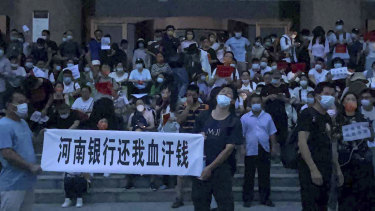
Demonstrators outside the People’s Bank of China in Zhengzhou, Henan province. CREDIT:AP
Initially depositors in the Henan banks were told they couldn’t access their funds because the banks were upgrading their systems, but it subsequently emerged that China’s authorities had started an investigation of allegations that a private investment company that had stakes in four small banks had colluded with bank employees to solicit funds via online finance platforms, which is illegal in China. Police in the province arrested a number of people associated with the private investment group, Henan Xincaifu Investment Group Holding Co.
Whether or not there was some sort of fraud involved in the Henan banks, the heavy-handed response of the authorities to the threat of a run on the banks and to the protests suggests something with wider significance. There have been reports of protests in other provinces.
Provincial banks historically marketed themselves to prospective depositors outside their regions using the big Chinese online platforms, but were banned from using third parties last year during the crackdown on the big tech companies, with the authorities citing potential financial risks. Since the ban, some smaller banks have created their own online marketing channels.
There is concern that the banks have attracted deposits by offering interest rates that are unsustainable in the current Chinese economic environment, with growth slowing quite dramatically because of the continuing lockdowns that result from China’s harsh “zero COVID” policy as well as soaring energy costs, droughts and floods.
July 12, 2022 —
It’s a bit hard to have a run on a bank when the depositors can’t get access to their funds, are assaulted by what appear to be plainclothes police when they protest, and China’s strict COVID regulations and the technology that supports them are used to flag protestors as health risks, which prevents them from using public transport or entering buildings.
The protest and assaults occurred at the weekend when an estimated 1000 depositors in rural banks in central China’s Henan province tried to protest a freezing of their funds that dates back to April. During an earlier protest last month protestors found that the health codes on their phones had turned red, which designates them as health risks and limits their mobility.

Demonstrators outside the People’s Bank of China in Zhengzhou, Henan province. CREDIT:AP
Initially depositors in the Henan banks were told they couldn’t access their funds because the banks were upgrading their systems, but it subsequently emerged that China’s authorities had started an investigation of allegations that a private investment company that had stakes in four small banks had colluded with bank employees to solicit funds via online finance platforms, which is illegal in China. Police in the province arrested a number of people associated with the private investment group, Henan Xincaifu Investment Group Holding Co.
Whether or not there was some sort of fraud involved in the Henan banks, the heavy-handed response of the authorities to the threat of a run on the banks and to the protests suggests something with wider significance. There have been reports of protests in other provinces.
Provincial banks historically marketed themselves to prospective depositors outside their regions using the big Chinese online platforms, but were banned from using third parties last year during the crackdown on the big tech companies, with the authorities citing potential financial risks. Since the ban, some smaller banks have created their own online marketing channels.
There is concern that the banks have attracted deposits by offering interest rates that are unsustainable in the current Chinese economic environment, with growth slowing quite dramatically because of the continuing lockdowns that result from China’s harsh “zero COVID” policy as well as soaring energy costs, droughts and floods.
Scenes like those at the weekend raise the risk of contagion within China’s banking system as depositors at other banks worry about losing access to their life savings.
When China’s second-quarter GDP data is released later this week, it is expected to have a “1” in front of it, which would have been unthinkable in pre-pandemic times.
In this environment, the potential for bank failures and bank runs, particularly among the smaller and less well-supervised banks, is real.
Scenes like those at the weekend – videos of the protests and the police response were circulated widely, and internationally, on social media – raise the risk of contagion within China’s banking system as depositors at other banks worry about losing access to their life savings.
Whether or not there is fraud involved in Henan, or if it is more a matter of the banks not being able to generate sufficient income to service the interest rates they offered to attract the deposits, it isn’t all that surprising that there are some stresses emerging within China’s banking system.
RELATED ARTICLE
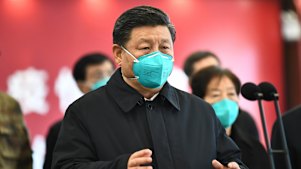
Coronavirus pandemic
Xi’s dilemma: The unvaccinated elderly keeping COVID-zero China in lockdowns
The implosion of the country’s property sector (after a heavy-handed crackdown on leverage) has generated a string of major property developer defaults on their debts. It has also damaged local governments heavily reliant on income from property sales to developers as the developers’ sales to home buyers have more than halved over the past year, and had a wider impact on a Chinese economy where more than 30 per cent of GDP is exposed to the property sector.
Despite central government attempts to prop up the sector with rate cuts, relaxation of lending restrictions, incentives to take out mortgages and voucher programs for future home purchases, mortgage lending in the first quarter of this year was at its lowest level on record.
So dire is the plight of developers that some of them in rural China are now offering to accept garlic, wheat, barley and even watermelons as payment for deposits.
And the dominoes keep falling at the big end of the property sector. Last month, ratings agency Moody’s said it had downgraded 91 developers over the past nine months. In the decade to December 2020, it had only downgraded 56.
Analysts have estimated there have been 30 defaults by companies with more than $US1 trillion ($1.5 trillion) in debt since Beijing introduced its “three red lines” policy restricting developers’ leverage in late 2020.
Last week, Shimao Group defaulted on a $US1 billion bond and this week China Evergrande, which defaulted on its offshore bonds late last year, moved closer to a default on its domestic debt after creditors refused to extend a deadline for repayment of their debts.
A domestic default by Evergrande would have major ripple effects through the sector. Until now, it has been primarily foreign creditors and owners of uncompleted apartments bearing the brunt of the property sector’s losses.
There’s also another $US13 billion or so of foreign currency bond payments due before the end of this year, which could drive another wave of defaults.
China’s authorities are clearly concerned because they are creating a bailout fund with capital provided by the major financial institutions as a contingency against potential collapses of banks or insurers.
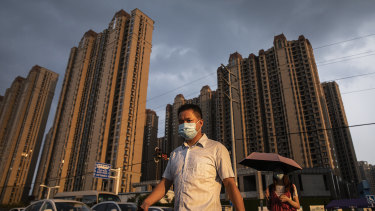
A domestic default by Evergrande would have major ripple effects through China’s property sector.CREDIT:GETTY IMAGES
They would have an eye not just on the stresses within China’s domestic financial system but the increased volatility within international markets and the divergence between China’s monetary policies and those of the US and Europe, which are tightening their policies even as China is loosening its monetary settings.
While the official data is yet to show any signs of a blow-out in non-performing loans within China’s banking system, that data is viewed with some cynicism by analysts outside China. It is almost inconceivable that the turmoil within the property sector hasn’t had a material impact on bank balance sheets.
The COVID lockdowns (there’s been another outbreak in Shanghai), the general slowdown in China’s economy, an exodus of foreign capital as interest rates in the US rise, and fear of being caught up in the West’s sanctions on those doing business (as China is doing) with Russia won’t help.
RELATED ARTICLE
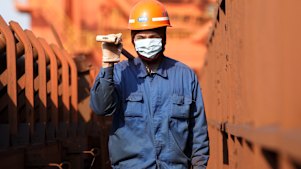
Opinion
Iron ore
China is trying to revive its economy. We just got a sign it is not going to plan
According to Bloomberg, Beijing’s Ministry of Finance is considering allowing local governments to sell the equivalent of $US220 billion of special bonds in the second half of this year, which would presage an attempt to generate growth through another big burst of infrastructure spending.
That’s another sign that the authorities are concerned about the trajectory of the economy and the vulnerability that its weakness might expose even as Xi Jinping readies himself for the Communist Party’s endorsement of an unprecedented third term as the party’s chairman later this year.
That’s another sign that the authorities are concerned about the trajectory of the economy and the vulnerability that its weakness might expose even as Xi Jinping readies himself for the Communist Party’s endorsement of an unprecedented third term as the party’s chairman later this year.
OPINION
Flatlining: China’s economy has been crippled by its zero-COVID policies
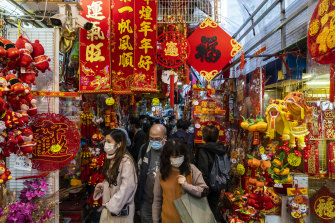
China’s weak June quarter data came in well below already-modest expectations.
Flatlining: China’s economy has been crippled by its zero-COVID policies

China’s weak June quarter data came in well below already-modest expectations.
Senior business columnist
SMH.COM
July 18, 2022
China’s economy is flatlining under the weight of its harsh response to COVID outbreaks. Without major fiscal and monetary stimulus, it will be near-impossible for the economy to meet Beijing’s growth target for this year.
The June quarter GDP data released on Friday showed an economy growing at a meagre 0.4 per cent, down from the 4.8 per cent recorded in the March quarter. For the first half of the year, the economy grew 2.5 per cent.
July 18, 2022
China’s economy is flatlining under the weight of its harsh response to COVID outbreaks. Without major fiscal and monetary stimulus, it will be near-impossible for the economy to meet Beijing’s growth target for this year.
The June quarter GDP data released on Friday showed an economy growing at a meagre 0.4 per cent, down from the 4.8 per cent recorded in the March quarter. For the first half of the year, the economy grew 2.5 per cent.
The 0.4 per cent growth was the second-worst quarterly outcome China has experienced in 30 years (the worst was the first quarter of 2020 when the economy shrank 6.8 per cent during the initial outbreak of COVID-19), rendering the achievement of the 5.5 per cent growth the authorities have set as the target for this year improbable.
China would need second-half growth of more than seven per cent to reach the full-year target, which would probably require large-scale stimulus; few COVID outbreaks; an end to the problems China’s property market is experiencing and a better outlook for the global economy than appears likely if it is to get close to that growth number.
The weak June quarter data came in well below already-modest expectations, which had ranged from about a one per cent to 1.5 per cent expansion in the economy.
RELATED ARTICLE
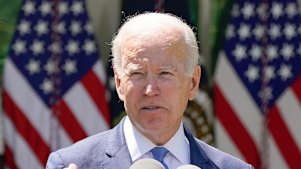
Opinion
Trade wars
The Russia blueprint: How the US may contain China
It was also posted despite Beijing having embarked on some stimulatory policies, using tax breaks and incentives to buy new cars and homes, along with a boost to infrastructure spending, to try to offset the impact of the interaction between significant outbreaks of COVID and its own “zero-COVID” policies and the severe lockdowns of major cities they have generated.
There was some evidence of the effects of that stimulus in the June quarter numbers. Retail spending recovered from a 6.7 per cent year-on-year decline in May to post 3.1 per cent growth in June, with the subsidies for new electric cars helping to double their production and underwrite retail spending levels. Infrastructure investment grew 6.1 per cent in June relative to June 2021 and 7.1 per cent year-to-date.
The data, however, also highlighted the continuing problems within a core sector of the economy, with real estate development investment down 5.4 per cent and home sales 29 per cent in the first half of the year.
Last year’s crackdown on property developers’ leverage has cut off developers’ access to funding and left a massive number of uncompleted apartments and, because China’s developers have operated on a pre-sales model, tens of thousands of very angry home buyers who have paid for homes that haven’t been completed.
There are protests in the streets and, increasingly, rising levels of mortgage delinquency and bank loan losses as those buyers refuse to service loans for properties they can’t inhabit. That will add to the existing intense pressure on developers and on a sector that historically has contributed more than 30 per cent of China’s growth.
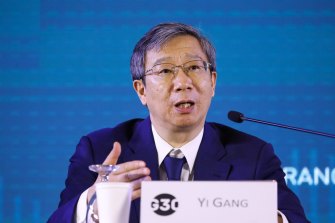
PBOC governor Yi Gang, said the economy was facing “certain downward pressures” because of the pandemic and external factors and would move to provide stronger economic support.
CREDIT:BLOOMBERG
The recovery towards the end of the June quarter was helped by the re-opening of Shanghai, which had experienced lockdowns in April and May. Shanghai’s economy contracted 13.7 per cent in the quarter.
That underscores how vulnerable the wider economy is to COVID outbreaks. There are still new cases being reported in Shanghai and new outbreaks and lockdowns occurring within the Henan and Guandong provinces. The national daily infection numbers are at near two-month highs.
While the authorities have slightly softened their approach to COVID, Xi Jinping has made it clear that trying to keep control of the outbreaks is his priority, even if it impacts economic growth. That tension might become greater as Xi’s ambitions for an unprecedented third term as national leader reach their moment of truth at the Communist Party’s national congress later this year.
The zero-COVID policy has impacted domestic economic activity and, coming after last year’s sudden crackdowns on the property and technology sectors, which left investors nursing significant losses, has triggered a substantial outflow of foreign capital.
RELATED ARTICLE
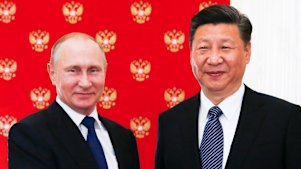
Opinion
Inside China
Xi Jinping’s year of triumph has been derailed by turmoil
Those funds are flowing into emerging markets and towards the safe haven of the US Treasury bond market where rising yields (as a result of the Federal Reserve Board’s response to the surge in inflation to 40-year highs and the consequent strengthening of the US dollar) have made US bonds a more attractive investment option.
So far, the authorities have refrained from the kind of massive stimulus programs China unleashed in response to the global financial crisis in 2008.
There has been some modest but targeted infrastructure investment but concerns about the degree of leverage within the economy, particularly at the local government level, have disciplined the response to the current downturn.
That may be changing. Beijing increased the amount of bonds that local governments can issue this year and had urged the local authorities to issue most of the new “special” bonds by mid-year. The central authorities are reportedly considering authorising another big bout of bond sales – several hundred billion dollars of new debt – for the second half of the year.
The already highly indebted local governments have been hit hard by the implosions within the property sector – land sales generate much of their revenue – and the initial bond sales were meant to help them stabilise and recapitalise smaller banks within their regions so that they could increase their lending while the new tranches now being considered would fund another round of infrastructure investment.
The People’s Bank of China has been running a relatively conservative approach to monetary policy and isn’t facing the inflationary pressures that confront other major central banks (which is an indication of the weakness of the economy).
Over the weekend, however, the PBOC, quoting its governor Yi Gang, said the economy was facing “certain downward pressures” because of the pandemic and external factors and would move to provide stronger economic support.
The external environment isn’t favourable for China. The strongest aspect of its economy has been the recovery in its exports but the high inflation rates and tightening financial conditions are slowing global economic growth and threatening a global recession.
Greater reliance on a domestic economy that is experiencing a property sector crisis that is sending ripples of distress through China’s financial system; which opens and shuts down in response to COVID cases and which is experiencing outflows of foreign capital at rates not seen for many years almost dictates that China will have to open the fiscal and monetary policy spigots if it is to generate a growth rate with a four in front of it this year, let alone the 5.5 per cent target the authorities nominated and still adhere to.
The recovery towards the end of the June quarter was helped by the re-opening of Shanghai, which had experienced lockdowns in April and May. Shanghai’s economy contracted 13.7 per cent in the quarter.
That underscores how vulnerable the wider economy is to COVID outbreaks. There are still new cases being reported in Shanghai and new outbreaks and lockdowns occurring within the Henan and Guandong provinces. The national daily infection numbers are at near two-month highs.
While the authorities have slightly softened their approach to COVID, Xi Jinping has made it clear that trying to keep control of the outbreaks is his priority, even if it impacts economic growth. That tension might become greater as Xi’s ambitions for an unprecedented third term as national leader reach their moment of truth at the Communist Party’s national congress later this year.
The zero-COVID policy has impacted domestic economic activity and, coming after last year’s sudden crackdowns on the property and technology sectors, which left investors nursing significant losses, has triggered a substantial outflow of foreign capital.
RELATED ARTICLE

Opinion
Inside China
Xi Jinping’s year of triumph has been derailed by turmoil
Those funds are flowing into emerging markets and towards the safe haven of the US Treasury bond market where rising yields (as a result of the Federal Reserve Board’s response to the surge in inflation to 40-year highs and the consequent strengthening of the US dollar) have made US bonds a more attractive investment option.
So far, the authorities have refrained from the kind of massive stimulus programs China unleashed in response to the global financial crisis in 2008.
There has been some modest but targeted infrastructure investment but concerns about the degree of leverage within the economy, particularly at the local government level, have disciplined the response to the current downturn.
That may be changing. Beijing increased the amount of bonds that local governments can issue this year and had urged the local authorities to issue most of the new “special” bonds by mid-year. The central authorities are reportedly considering authorising another big bout of bond sales – several hundred billion dollars of new debt – for the second half of the year.
The already highly indebted local governments have been hit hard by the implosions within the property sector – land sales generate much of their revenue – and the initial bond sales were meant to help them stabilise and recapitalise smaller banks within their regions so that they could increase their lending while the new tranches now being considered would fund another round of infrastructure investment.
The People’s Bank of China has been running a relatively conservative approach to monetary policy and isn’t facing the inflationary pressures that confront other major central banks (which is an indication of the weakness of the economy).
Over the weekend, however, the PBOC, quoting its governor Yi Gang, said the economy was facing “certain downward pressures” because of the pandemic and external factors and would move to provide stronger economic support.
The external environment isn’t favourable for China. The strongest aspect of its economy has been the recovery in its exports but the high inflation rates and tightening financial conditions are slowing global economic growth and threatening a global recession.
Greater reliance on a domestic economy that is experiencing a property sector crisis that is sending ripples of distress through China’s financial system; which opens and shuts down in response to COVID cases and which is experiencing outflows of foreign capital at rates not seen for many years almost dictates that China will have to open the fiscal and monetary policy spigots if it is to generate a growth rate with a four in front of it this year, let alone the 5.5 per cent target the authorities nominated and still adhere to.

Stephen Bartholomeusz
Senior business columnist
No comments:
Post a Comment